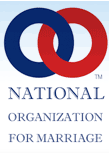|
The impact of the article “What Is Marriage?” in the Harvard Journal of Law and Public Policy on the gay-marriage debate continues to be profound. Authors Sherif Girgis, Robert P. George, and Ryan T. Anderson (hereafter GG&A) issued a challenge to those who would “expand” the institution of civil marriage to include same-sex couples: answer their title question with a definition of marriage that is principled, coherent, and defensible without breaking down into the recognition of any and every sort of relationship brought forward with a claim to be recognized as a “marriage.” So far the only answer, the only definition of marriage that meets these logically and morally compelling criteria is the one GG&A give themselves: that marriage is the comprehensive conjugal union of a man and a woman. To say it applies to other pairs or groupings, or to male-female relations that are not comprehensive or conjugal, is to impart to marriage a definition that is self-destroying, incapable of maintaining a recognizable shape. Two prominent gay-marriage advocates in the world of legal scholarship have stepped up to critique GG&A’s “What is Marriage?”–Kenji Yoshino of NYU law school, and Andrew Koppelman of Northwestern law school. Yoshino, at Slate, first assayed a criticism almost completely devoid of substance, and GG&A easily rebutted him at Public Discourse. (Yoshino has taken another stab at the issue, with the very telling concession that he “refuse[s] to answer the question ‘What is marriage?’” because the institution may in the future face even more “new challenges” to include still more relationships than those now claiming entry.) Koppelman, for his part, writes at the Balkinization blog that he thinks Yoshino didn’t “really engage with any of [GG&A's] arguments,” and goes straight to the heart of the matter: he holds that marriage is “just a construct that has developed over time, and that therefore can be changed by human beings if that seems best.” In other words, it has no correspondence to the nature of things, but is wholly conventional, from the bottom up. Hence, for Koppelman, “[a] proposal to modify marriage is ontologically similar to a proposal to modify the game of chess.” We can make it whatever we want it to be, and continue to call it “marriage” just as we could make chess indistinguishable from checkers and still call it “chess.” Koppelman earns points for candor, but is marriage really whatever we say it is? Today at Public Discourse, GG&A respond to Koppelman, arguing in part that “marriage isn’t a pure construct, any more than human rights are mere constructs. Both are moral realities that the state has good reasons to recognize and support.” The whole exchange is worth reading, starting with Koppelman’s blog post. And here’s the really good news: Girgis, George, and Anderson appear to have started an actual debate on this question, just when many on the other side of the gay marriage controversy want to shut down debate with accusations of “hate speech,” as I noted in a recent Washington Post article. Yoshino and, especially, Koppelman, are to be commended for their civility, and for engaging in a shared attempt to come to grips, rationally, with one of the most momentous moral and legal questions facing our country today. Both sides cannot be right–but neither side needs to be tarred with the epithet “bigots!” while the debate continues. Source article: click here. |
Now We're Talking (About the Marriage Issue)
December 31, 2010 at 9:28 am


10 Comments